Two Full Moons on Dome
Posted: 24 April 2024
Sunday, 21 April 2024, was partly cloudy. That night I was at Oracle State Park, our local "International Dark Sky Park", for a special interview. I'll report on that at a future date. I took this iPhone 15 Pro Max photo on the bright moonlit night at the Park.
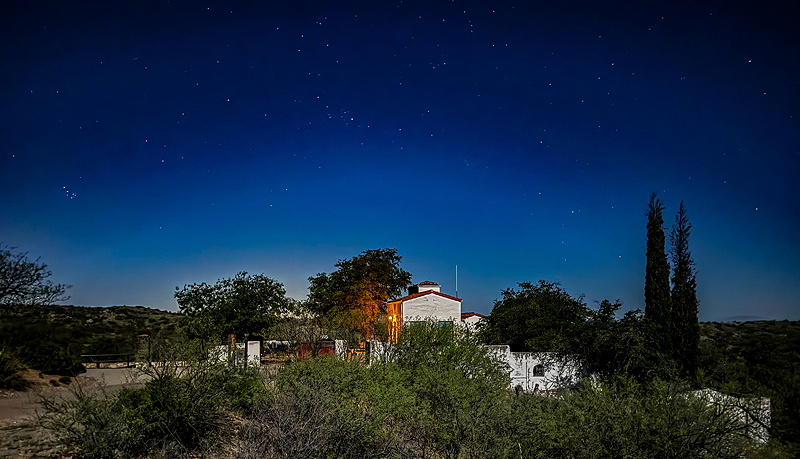
Click or tap on image for larger version
Monday, 22 April, dawned clear, but unforecast clouds arrived late afternoon along with wind. The sky was clear on Tuesday, 23 April, but it was still windy.
|
Open: Tuesday, 23 April 2024, 1822 MST Temperature: 89°F |
Session: 1956 Conditions: Clear |
Equipment:
12" f/8 LX600 w/StarLock
2" 24mm UWA eyepiece
Binoviewers
1.25" 20mm eyepieces
1.25" 26mm eyepiece
1.25" 40mm eyepiece
Camera:
iPhone 15 Pro Max
1831 MST: Relaxed on the observatory patio bench while waiting for the wind to calm down.
1855 MST: Calm now. I did a short walkaround.
1857 MST: The desert is beginning to "green up", as seen in this iPhone 15 Pro Max of the observatory.

1902 MST: Sunset.
1903 MST: LX600 ON, StarLock OFF, High Precision OFF.
Viewed Jupiter, low in the western twilight sky, 102X.
1907 MST: Returned the bench to wait for the just past Full Moon to rise over the hill. The Moon was precisely Full at 1646 MST.
1940 MST: Back in the observatory. Tried to view NGC3621 (galaxy) and Supernova 2024ggi, 102X. Neither were visible in the twilight sky. The eastern sky was brightening from the rising Moon.
1946 MST: Back to the bench.
1955 MST: Back at the 12" telescope I viewed SN2024ggi, which was faintly visible in the bright moonlit sky, 102X. The galaxy was not visible.
2001 MST: Stepped outside of the observatory and took this handheld iPhone photo of the western sky using the Camera app (Night Mode, 3 seconds, 0.5X lens). The constellation of Orion is setting on the left.
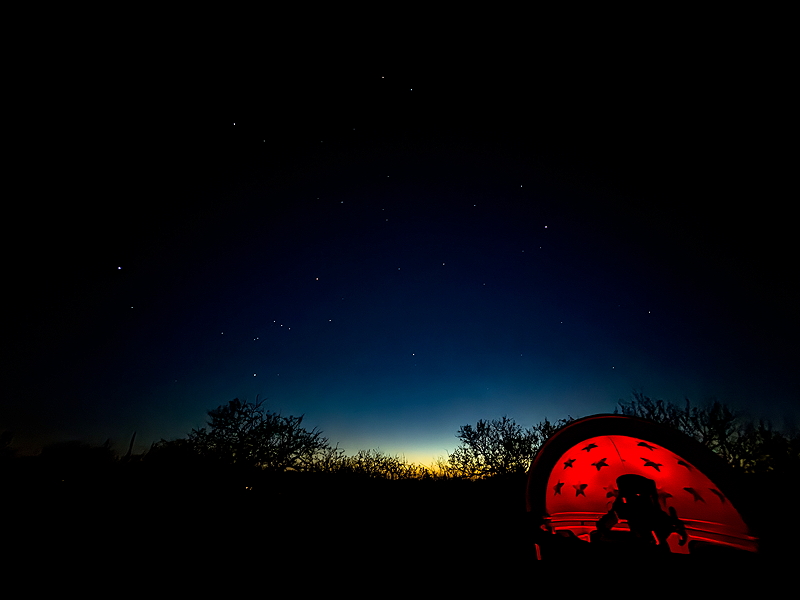
2004 MST: Viewed the Leo Triplet of Galaxies, M65, M66, and NGC3628 (Sarah's Galaxy), 102X. M65 and M66 were easy to see in the moonlit sky, but Sarah's Galaxy was only faintly visible.
2006 MST: Back to the bench waiting for the Moon to appear.
2012 MST: Full Moon rising over the hill. I then began waiting for the Moon to rise above a tree.
2032 MST: The Full Moon (102X) projected onto the observatory dome. Taken with the iPhone 15 Pro Max, handheld, Camera app (Night Mode, 3 seconds, 1X lens).
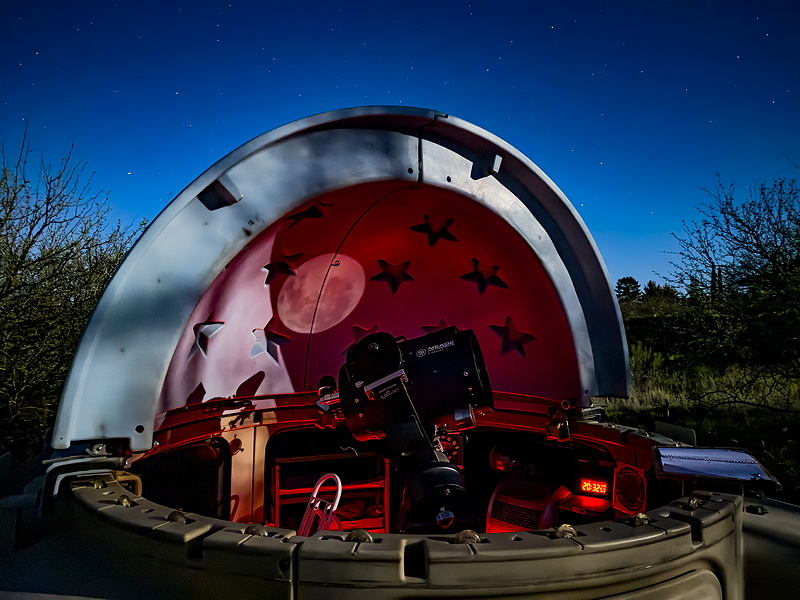
2053 MST: Back in the observatory.
Viewed the Moon, 102X. Then took this handheld iPhone afocal 102X image of the Full Moon using the NightCap Camera app (ISO 55, 1/3000sec, 1X lens).

Using the William Optics Binoviewers I viewed the Moon, 122X. The field-of-view did not show the entire disk of the Moon. A very slight terminator was visible.
I switched from the two 20mm eyepieces in the Binoviewers to a 26mm and a 40mm eyepiece, providing 94X and 61X. Took this handheld iPhone photo using the Camera app (Night Mode, 3 seconds, 1X lens) showing two Full Moons on the observatory dome.
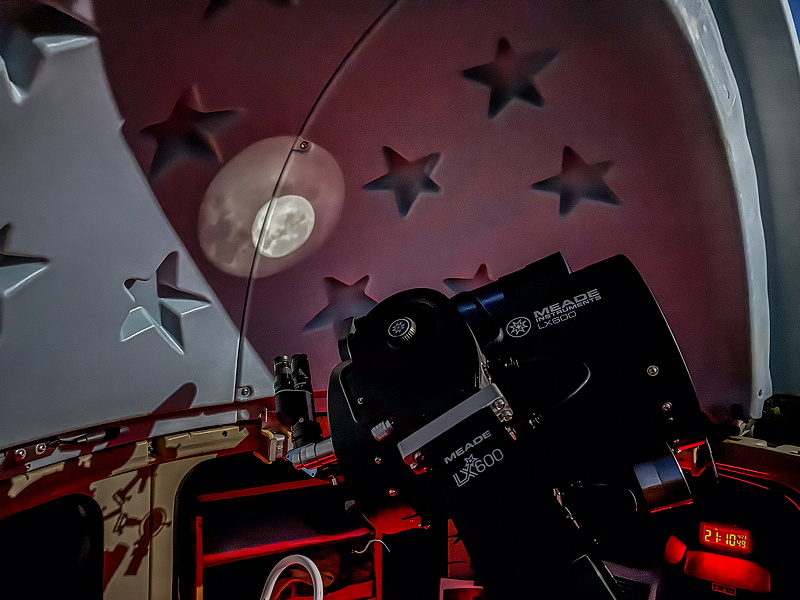
Lastly, I viewed the Moon, 102X.
2120 MST: LX600 OFF.
2129 MST: iPhone photo of the moonlit observatory, Camera app (Night Mode, 3 seconds, 1X lens).
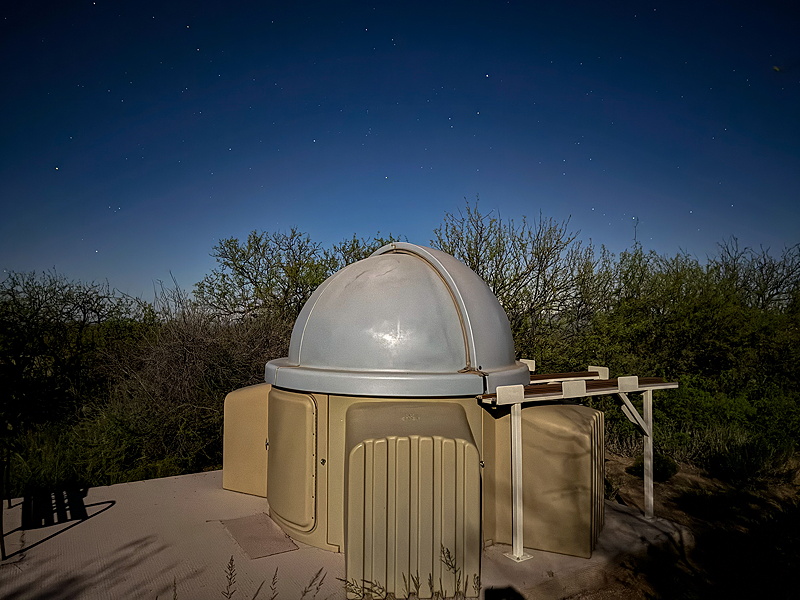
|
Close: Tuesday, 23 April 2024, 2130 MST Temperature: 67°F |
Session Length: 3h 08m Conditions: Clear |
Comments are welcome using Email. Please read the Email Etiquette guidance.
Cassiopeia Observatory Home Page
Copyright ©2024 Michael L. Weasner / mweasner@mac.com.
URL = http://www.weasner.com/co/Reports/2024/04/24/index.html
